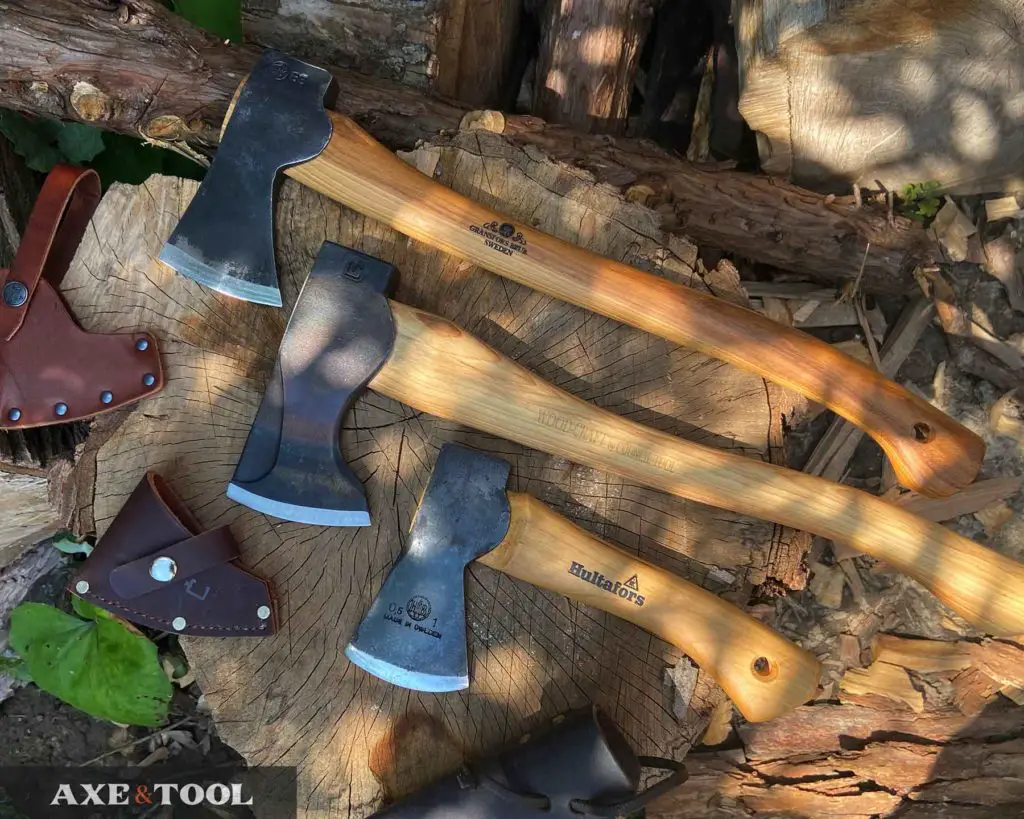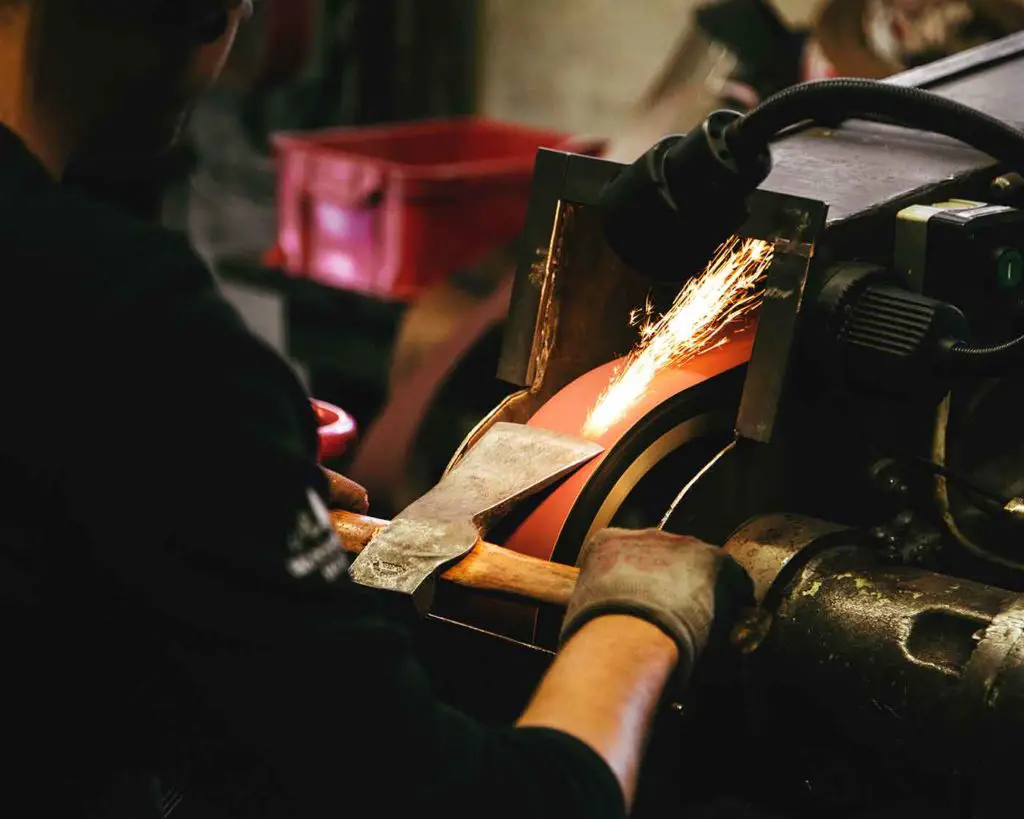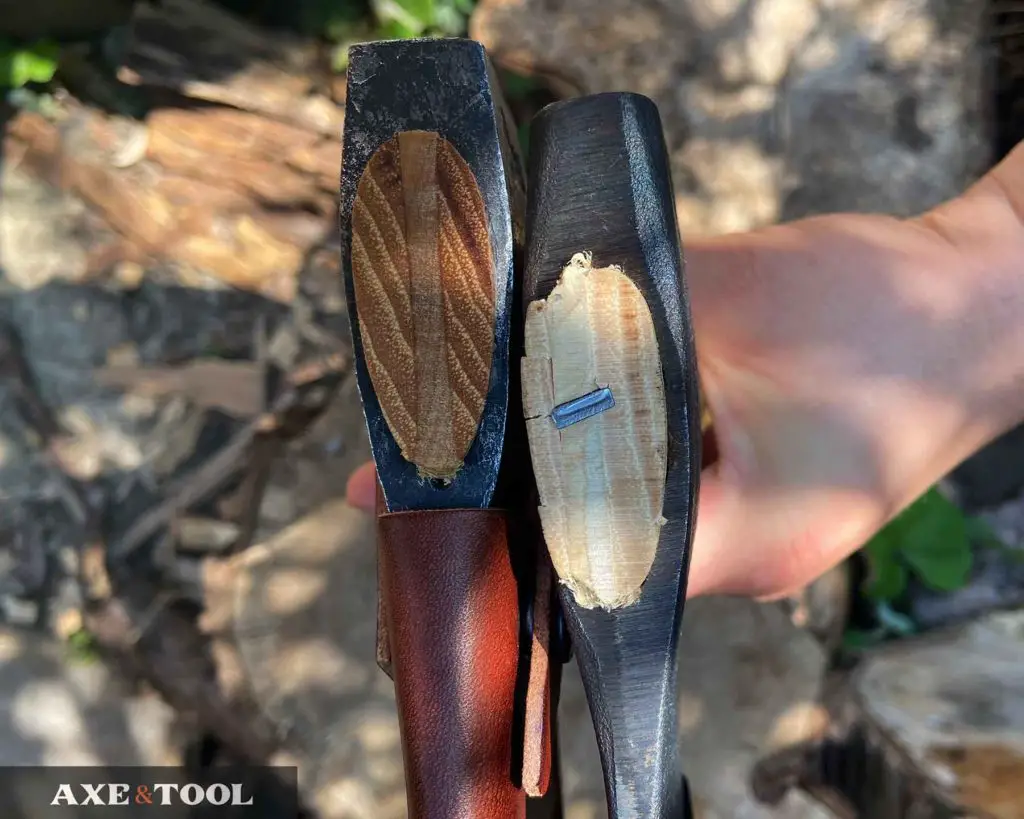Why Gransfors Bruks (and Other Premium Axes) Cost More

The ($150-$200) sticker price on a “premium” axe like a Gransfors Bruk or Hults Bruk axe can be a little shocking to some. Especially when compared to common axes like Fiskars or Council Tool which are closer to $50.
Premium axes like Gransfors Bruks cost more because of the skilled labor that goes into making and finishing them. The blacksmithing, sharpening, and hanging on the handle are all done by hand. Additionally, higher carbon steel and higher grade hickory are used above standard axes.
There are long and short-term benefits to buying a premium axe. They come sharp, hold an edge longer, and feel better in hand, and the extra time spent hanging and finishing them makes them less likely to loosen with time. You will appreciate the craftsmanship in hand – you can see the forge and hammer marks, the finish is great and they feel like a crafted tool.
However, I want to make it very clear – Premium axes can still break, rust, loosen, and need sharpening. And they will not instantly make you chop wood twice as fast, or turn you into a master outdoorsman.
I do not recommend most people start with a premium axe until they have learned some of the basic skills on a cheaper one. It’s a lot more painful to chip an edge or overstrike a handle with a $200 axe (I’ve done it).
The craftsmanship and finish of a premium axe add cost
Every step of high-end axe production takes time from a skilled worker, which improves the finish and function overall but adds cost.
Premium axe heads are smithed and finished by hand

Premium axe heads for brands like Gransfors Bruk and Hults Bruk are hand-forged.
Each axe head is individually made by a smith working at an auto hammer from a block of steel. Then they are sharpened and polished by hand. Extra attention is being taken to make sure the cutting edge is consistent and properly sharpened at a correct angle.
Many cheap axes are quickly ground into a rough working edge that chops, but is not “sharp”. Or they are machine-shaped to a point – but again not truly sharpened.
True sharpening is a task that must be done by hand, and with care. Hults Bruk has claimed that a premium axe gets as much as 10x the sharpening time compared to a standard axe. [1]
Attention to detail in the handle and the hang
Once a head is forged and sharpened it gets hand-fitted to a handle, to ensure it is on straight with no gaps or cracks. Cheaper axe handles are roughly shaped to fit the head, and then force fit with a hydraulic press.
Quickly pressed handles typically look messier and are more likely to have gaps or faults. They are also more likely to loosen long-term.
You can see the difference in the eyes below. The left is a Gransfors Bruks Small forest axe, and the right is a Council Tool Flying Fox. Both are great axes, but you and see the difference immediately.

Note: This does not mean the Council Tool axe is bad – It’s actually highly recommended, and an excellent choice for a fraction of the cost. This just illustrates the finish difference.
Cheap axe handles can vary in execution. Often they are very thick, which is worse for ergonomics and control (but are cheaper to produce). Other times they are just inconsistent in their production, and you have to look for the “good ones” in the group.
Premium handles will be thinner, have better shaping around the grip, and have smoother transitions around the shoulder. They are also much more uniform and consistent between axes.
Gransfors Bruk handles go a step further
Gransfors Bruk handles come tumbled in beeswax at the factory after they are oiled. This makes them feel great in hand, but more importantly, keeps moisture out of the wood and protects the handle.
It will wear off with use, but it’s a very nice feature that most other companies do not do.
Premium axes use better steel and better hickory

The steel used in premium axes is harder with higher carbon content. Gransfors Bruk and Hults Bruk (Hultafors) don’t say what steel they use – but if you have ever tried to use a file on one you will know they are HARD.
The premium Council Tool axes (Velvicut and Woodcraft) use 5160 Alloy steel, which has a high carbon hardness, but also a bit of added rust resilience. Whereas their standard axes use a softer (but still good) 1055/1065.
Why is harder steel better for axes?
The harder steel will hold a sharp edge longer, so you will be able to do more chopping between sharpening. But it doesn’t mean you will never have to sharpen it.
I don’t recommend learning to sharpen on a $200 axe. Because it takes practice and will be much more painful if you make a mistake. Plus it will be even tougher to learn on the hard steel.
The softer steels need more frequent sharpening, but they are easier to work with, which is perfect for beginners.
Better hickory adds strength
The handles are made from higher quality “select” wood, which will have better grain orientation, less grain run-out, and will be free of knots. That is not always the case for cheaper axes.
Premium handles can still break and have imperfections (they are wood) – but they will be a much more reliable handle. They will last a lifetime with proper use and care.
Conclusion
Hopefully, this article has set you up with what you can expect. Premium axes are not magic – always sharp, never failing tools. But they have craftsmanship you will appreciate and details that make a difference for the user.
Please comment below If I missed something or if you have any questions. I do my best to respond to everyone.
About the author:
About the author:
Jim Bell | Site Creator
I’m just a guy who likes axes. I got tired of only finding crap websites, so I set out to build a better one myself.
I’m also on Instagram: @axeandtool

